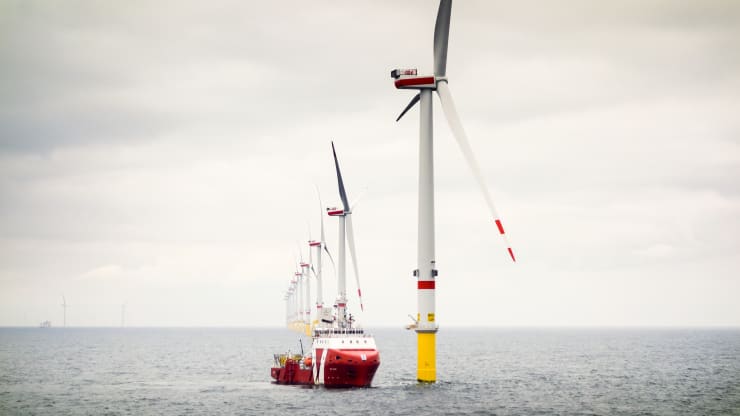Renewable hydrogen production
Danish energy company Orsted wants to build a large-scale offshore wind farm in the North Sea and link it to so-called "renewable" hydrogen production on the European mainland, with the project being supported by some large industrial companies.
Under the proposal, launched on Wednesday, Orsted will develop an offshore wind facility with a capacity of 2 gigawatts (GW) and 1 gigawatt of electrolytic capacity, with the company announcing plans to create "The world's largest renewable hydrogen plants is connected for industrial needs. "
The SeaH2Land development - supported by companies including ArcelorMittal, Yara, and Dow - will also include 45 kilometers of hydrogen pipeline between Belgium and the Netherlands.
The project's electrolysis portion - to be built in two 500-megawatt phases - will use electricity from the wind farm to produce hydrogen.
The development partners need to carry out a full feasibility study on SeaH2Land, while Orsted has yet to make a final investment decision. However, if all goes well and the project is given the green light, both parts of the electrolytic will be operational by 2030.
Martin Neubert, Orsted's Commercial Director, said: "When the world looks weak, it is most vital that we act now to ensure the long-term competitiveness of the industry. Martin Neubert, Orsted's commercial director, said Europe in a green economy in a statement.
Described by the International Energy Agency as a "versatile energy carrier", hydrogen has many diverse applications and can be produced in many ways.
One method involves the use of electrolysis, with electric current splitting water into oxygen and hydrogen. If the electricity used in the process comes from a renewable source like wind or solar, some people describe it as "green" or "renewable" hydrogen.
In recent years, a number of businesses have been interested in renewable hydrogen connection projects, while major economies such as the European Union have planned to install at least 40 GW of renewable hydrogen electrolytes. create. by 2030.
In March, a large green hydrogen facility in Germany began operations. The "WindH2" project, as it is known, has the participation of German steel giant Salzgitter, subsidiary Avacon and Linde of E.ON, a company specializing in engineering and industrial gases.
In another development, a subsidiary of the multinational building materials company HeidelbergCement worked with researchers from the University of Swansea to install and operate the blue hydrogen demonstration device at a UK residential location.
Interest in hydrogen is not limited to Europe. In a speech last November, Indian Prime Minister Narendra Modi said his country is proposing to launch what he describes as the "Comprehensive National Hydrogen Mission".
Presenting the country's budget earlier this year, Nirmala Sitharaman, India's Finance Minister, consulted Modi's announcement, adding: "Currently, it is proposed to launch the Hydrogen Mission in 2021-22 to make hydrogen from green energy sources ".
As the third-largest emitter of greenhouse gases on the planet, India's effort to embrace hydrogen and other renewable technologies - targeting 450 GW of renewable capacity by 2030 - if fully implemented, will represent a significant change.

